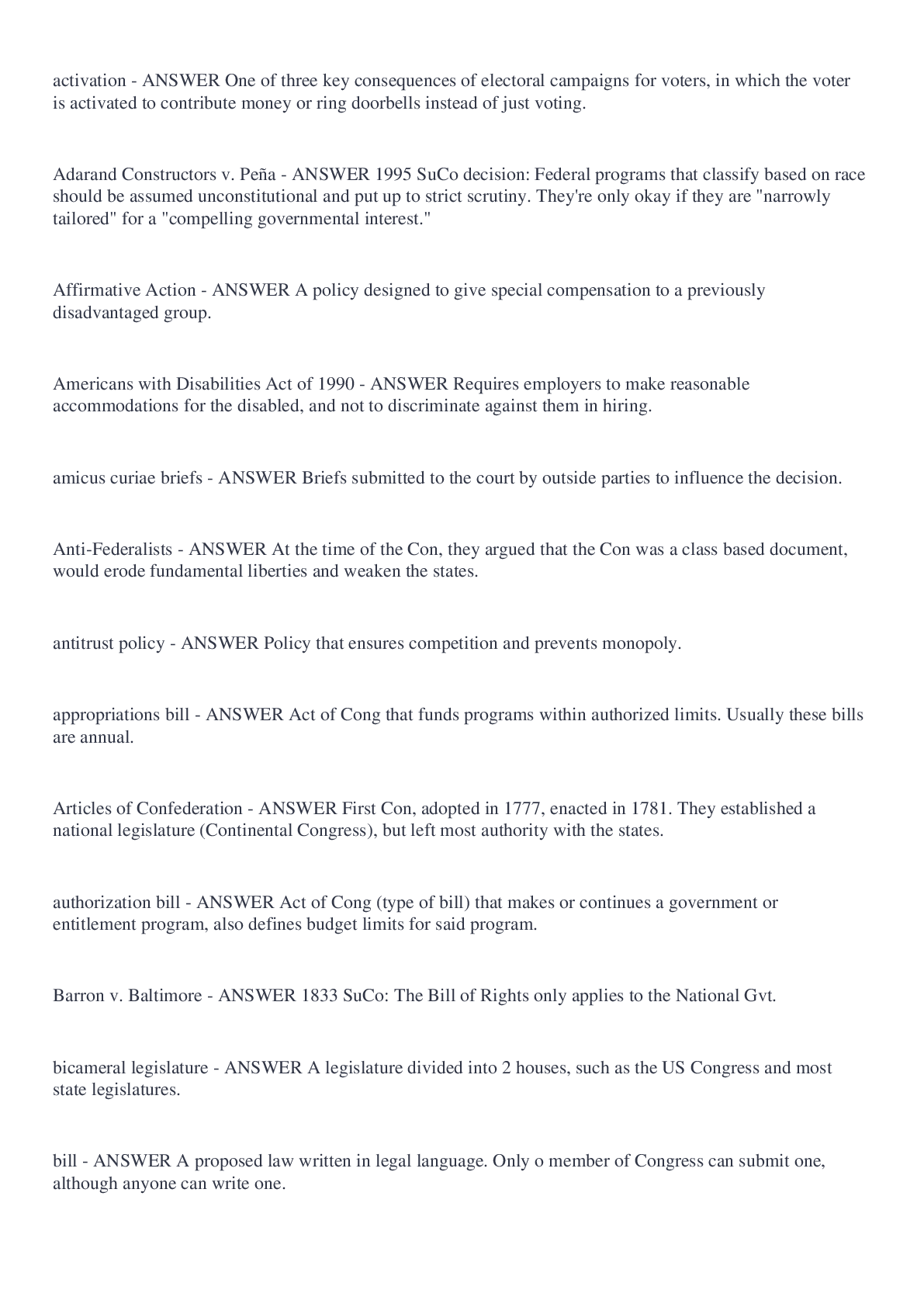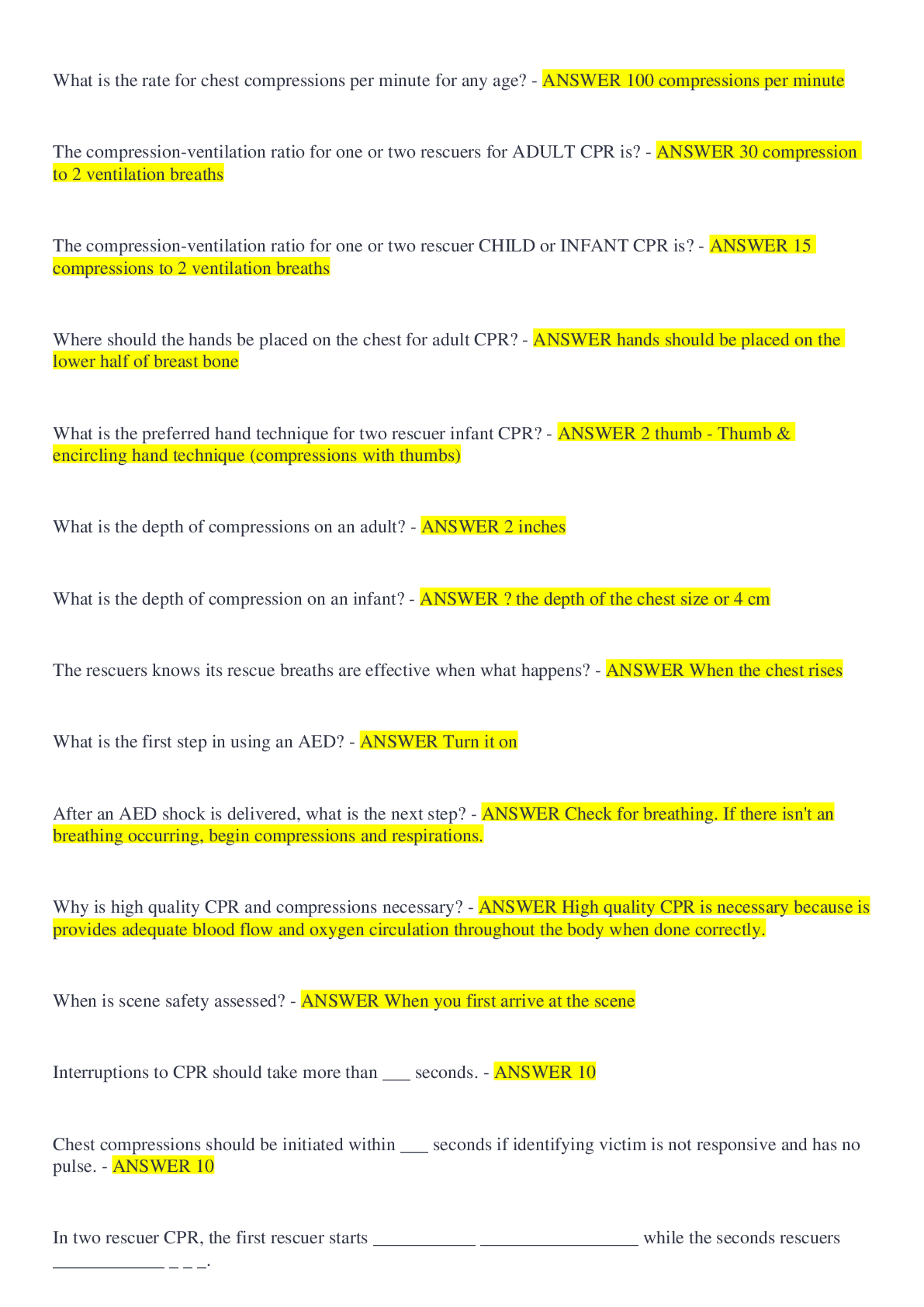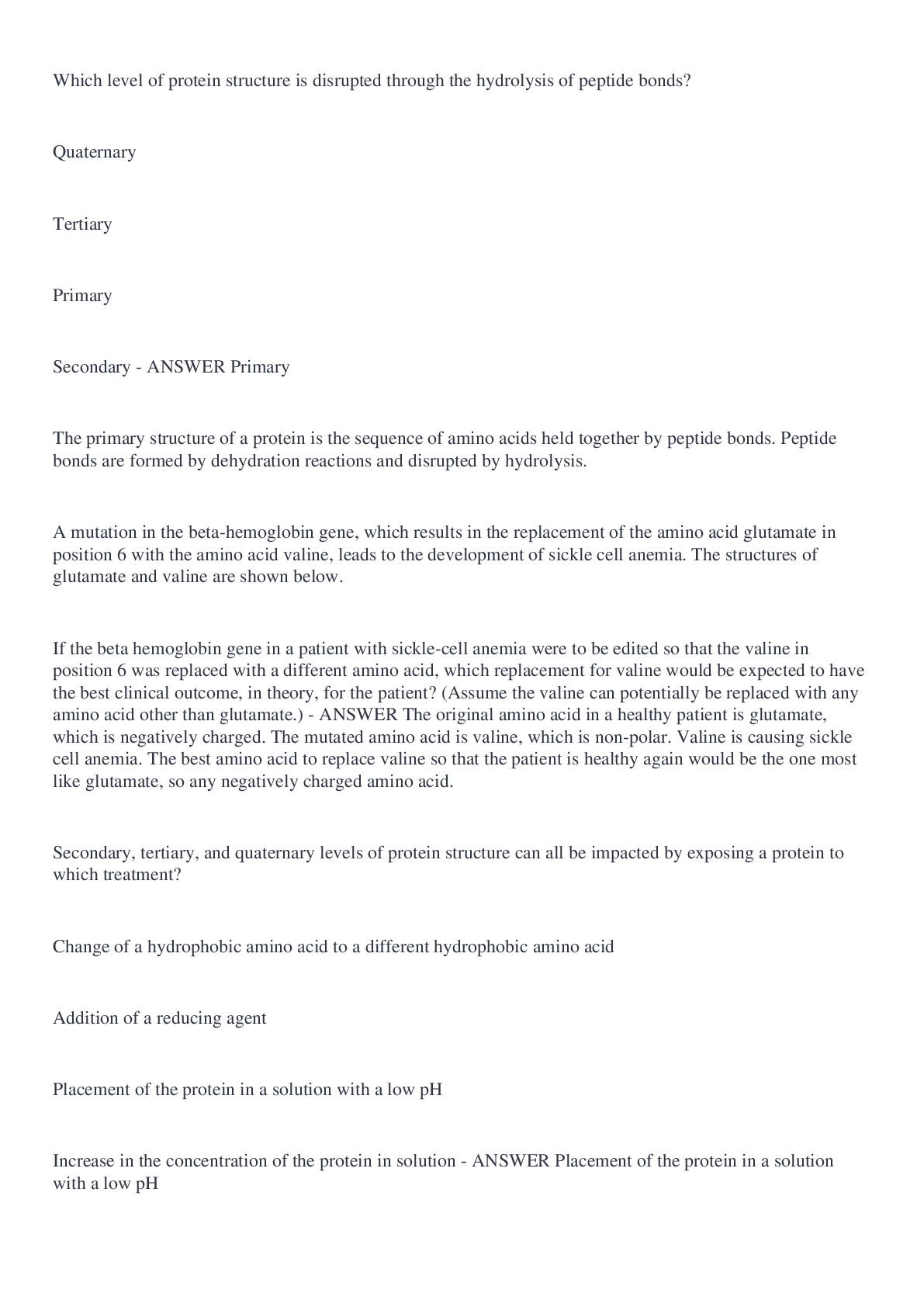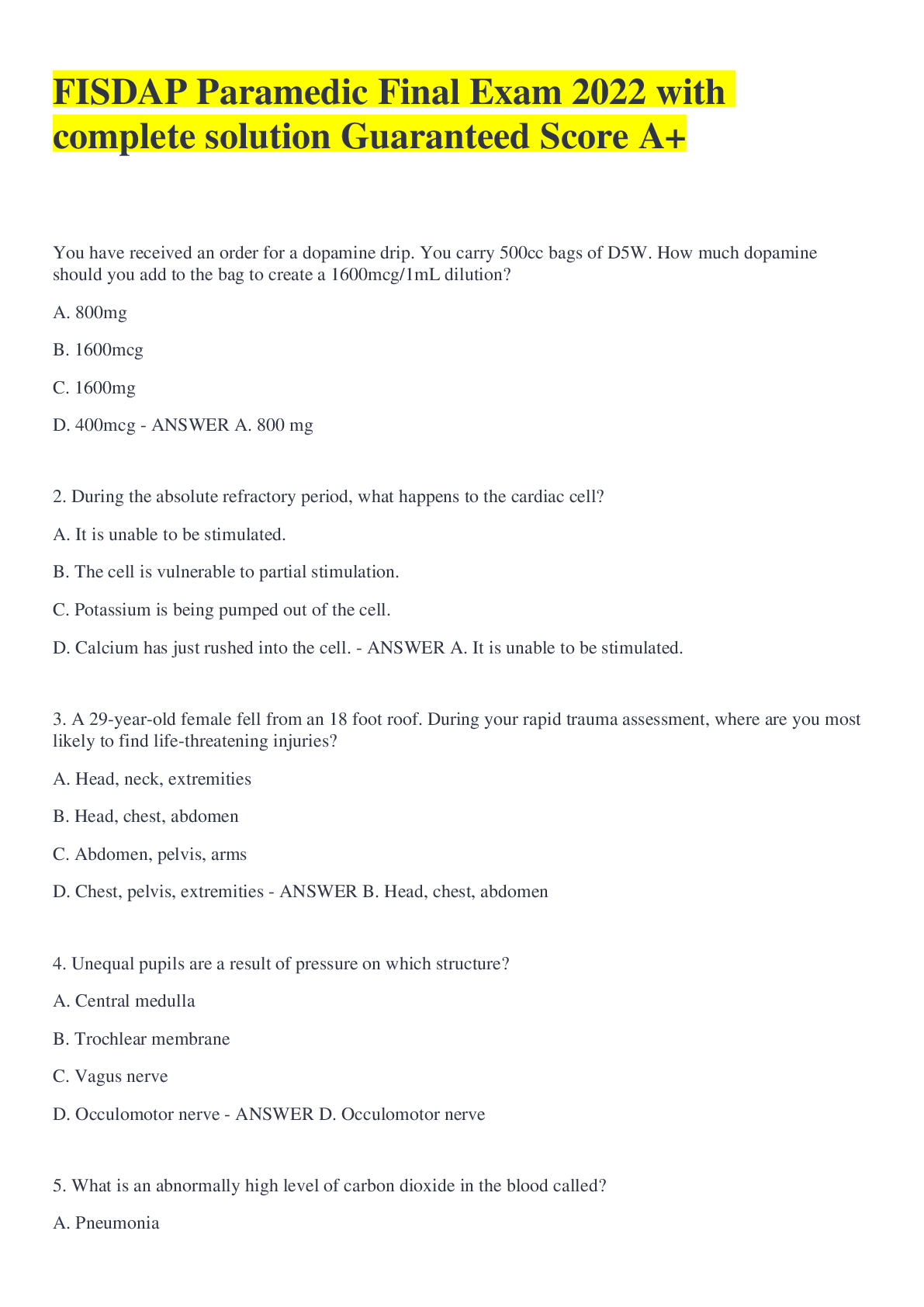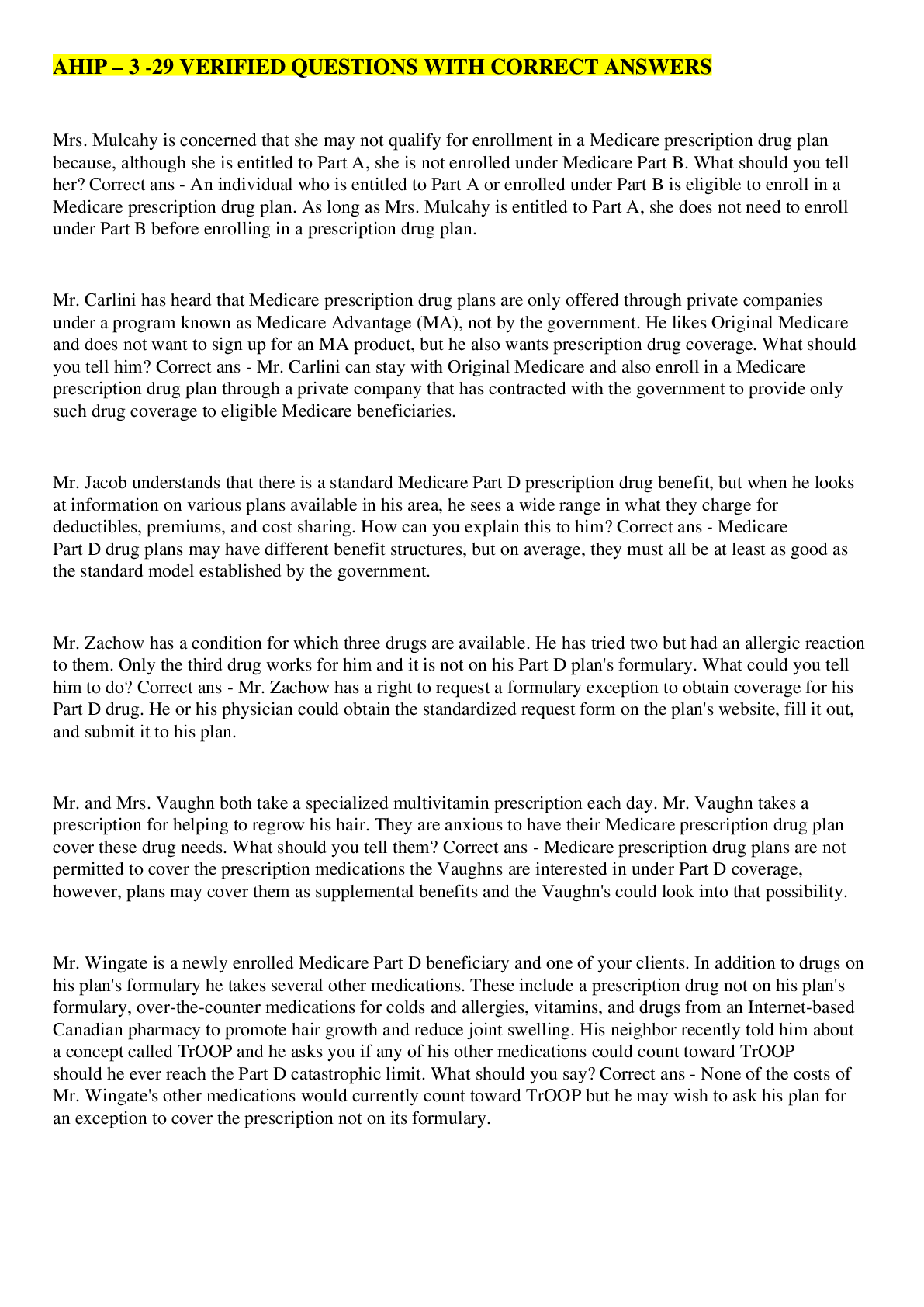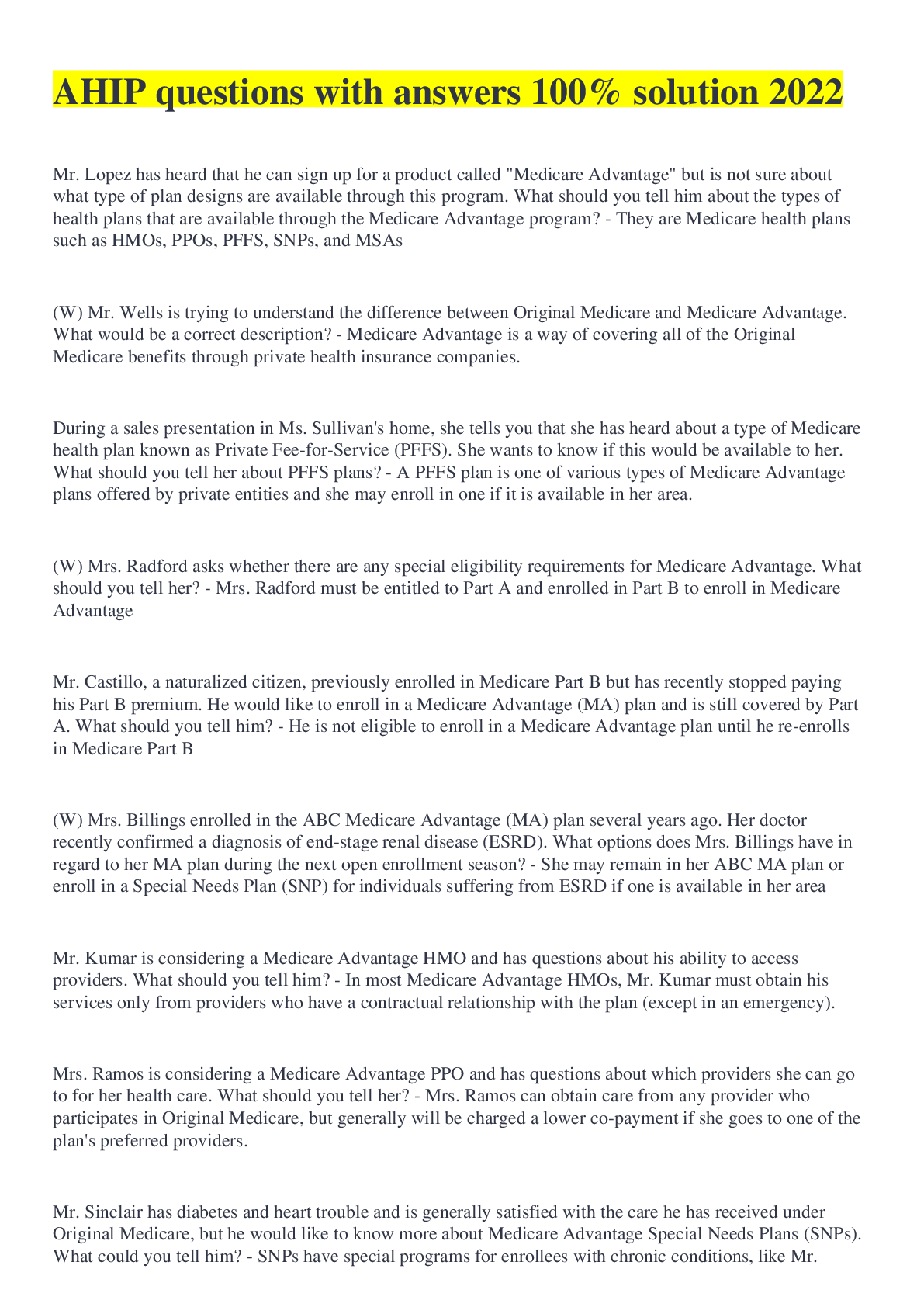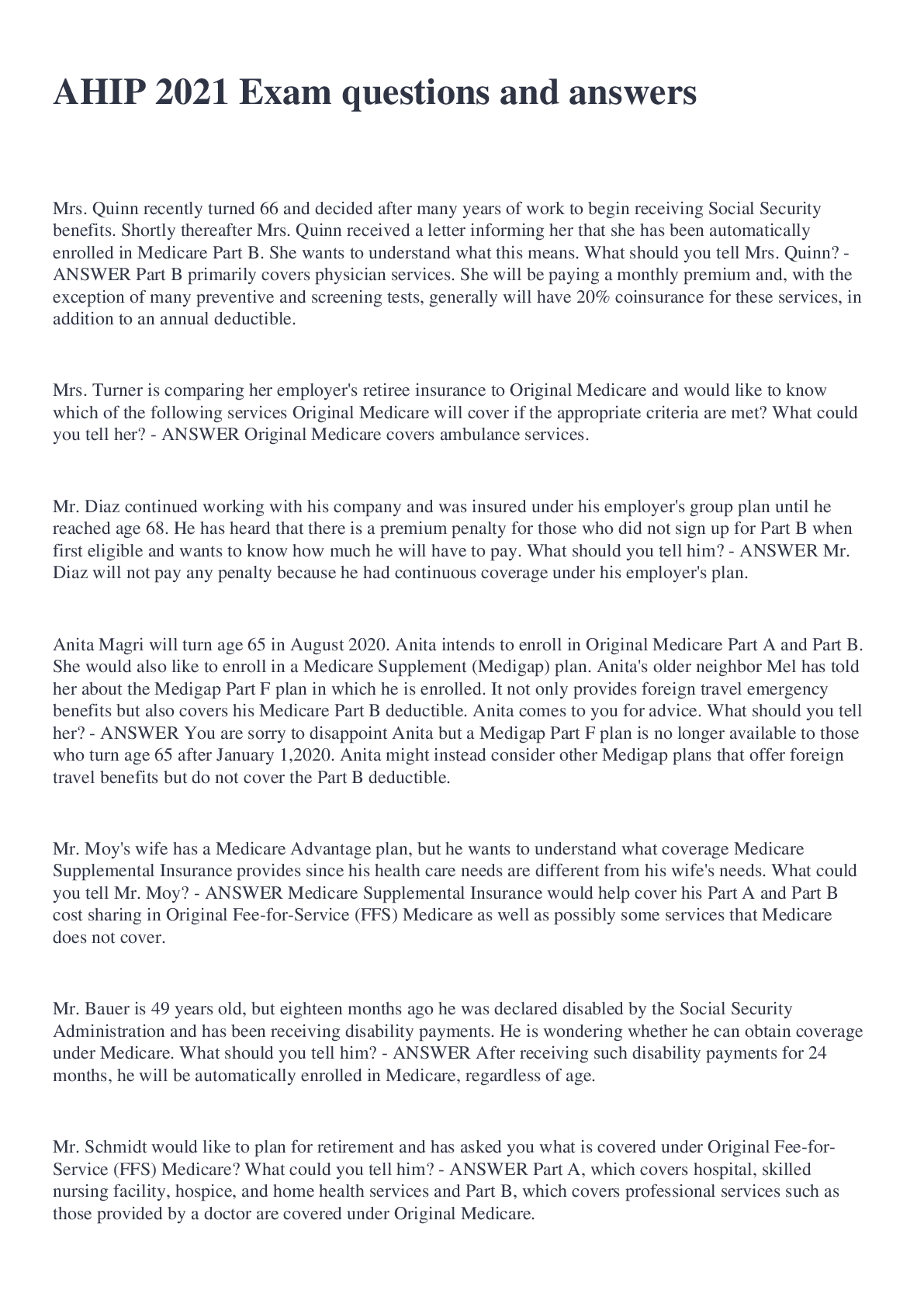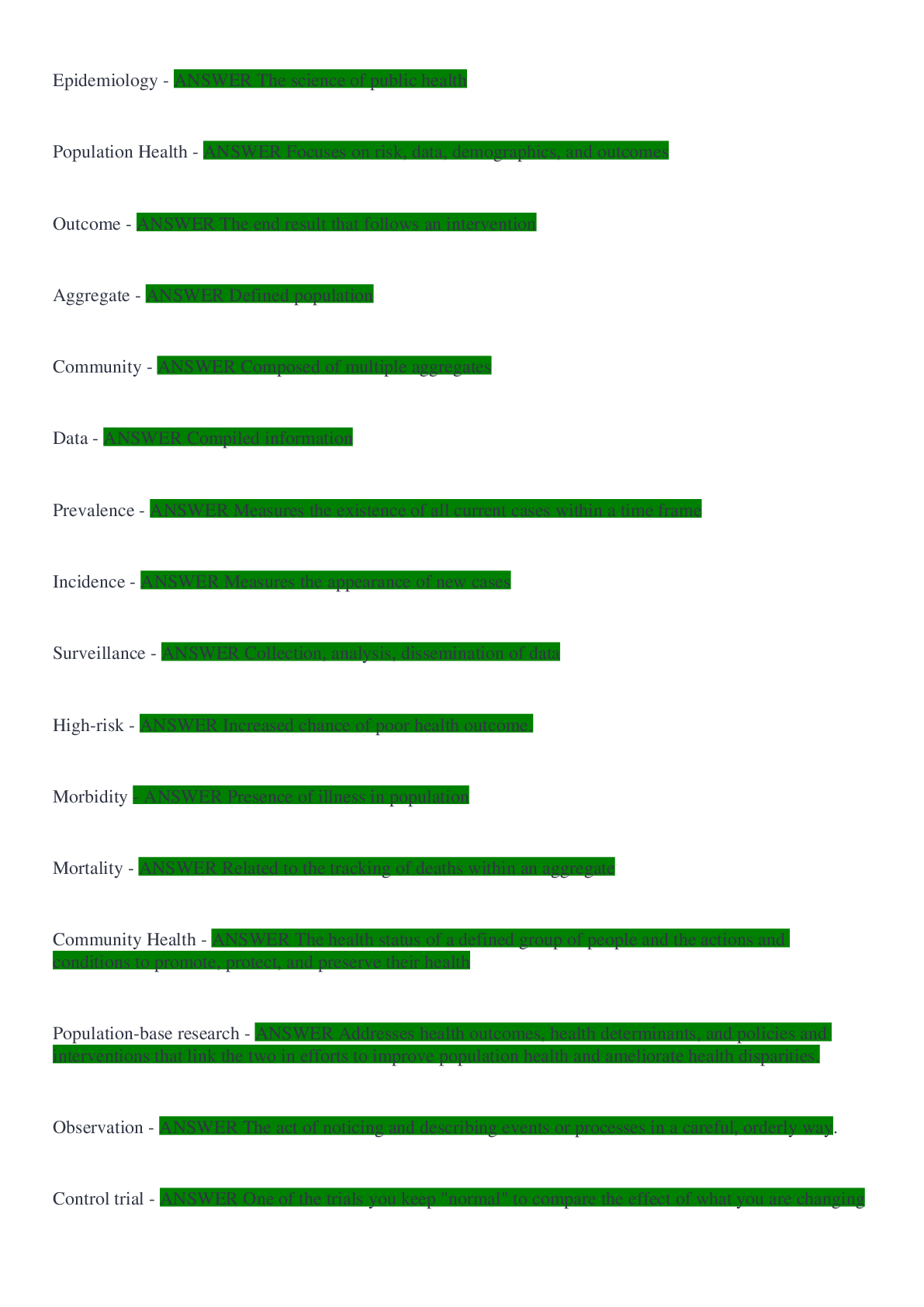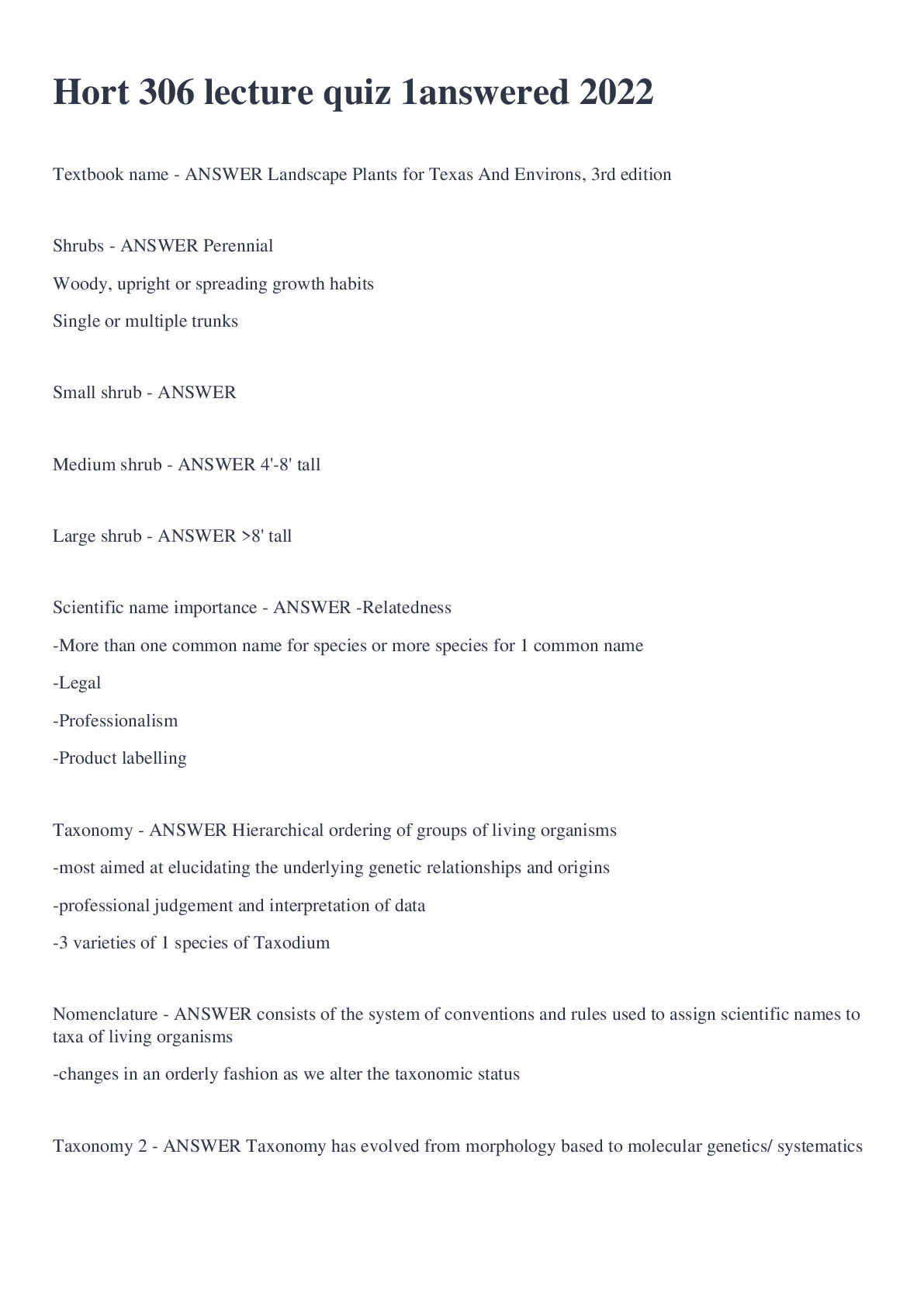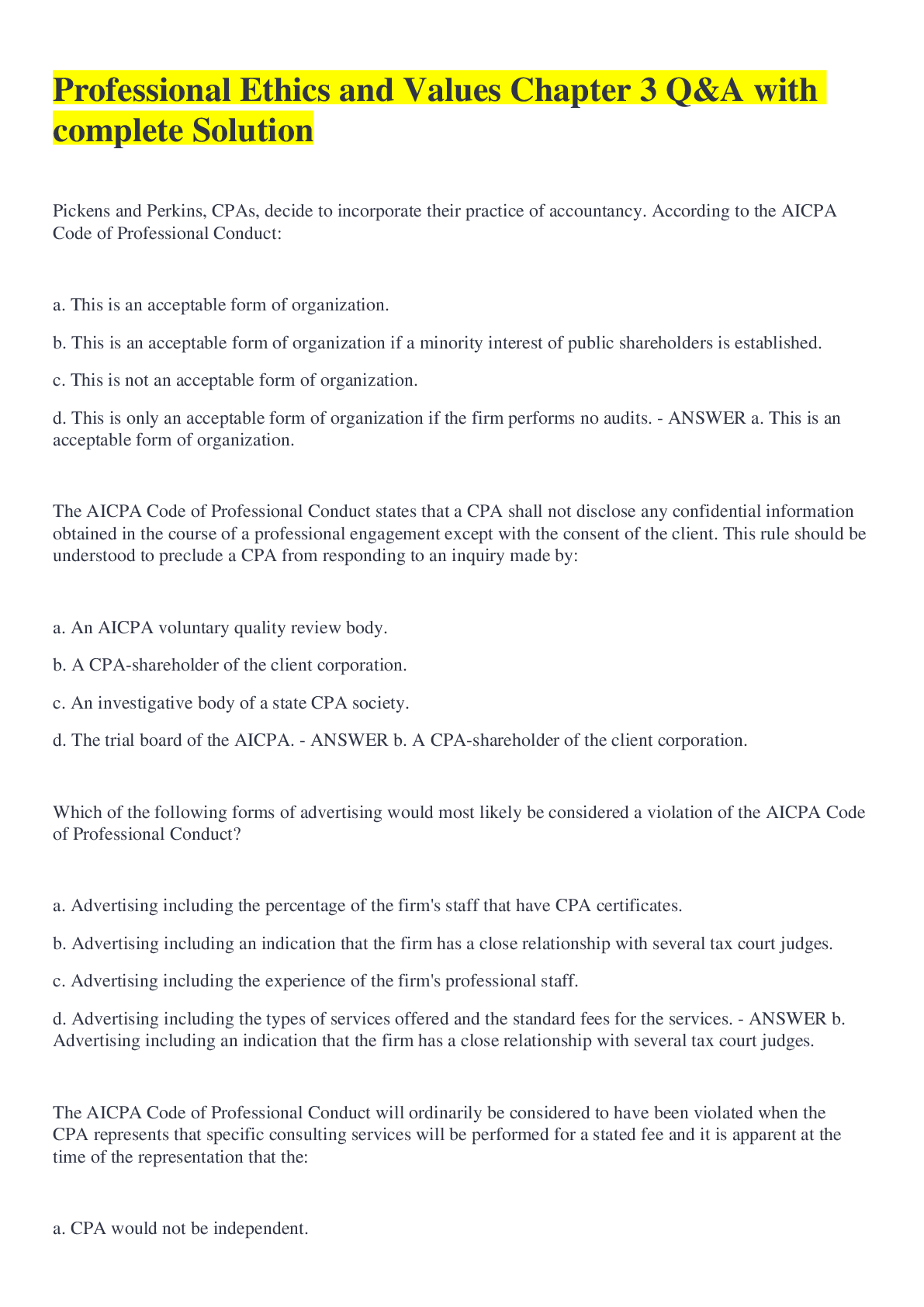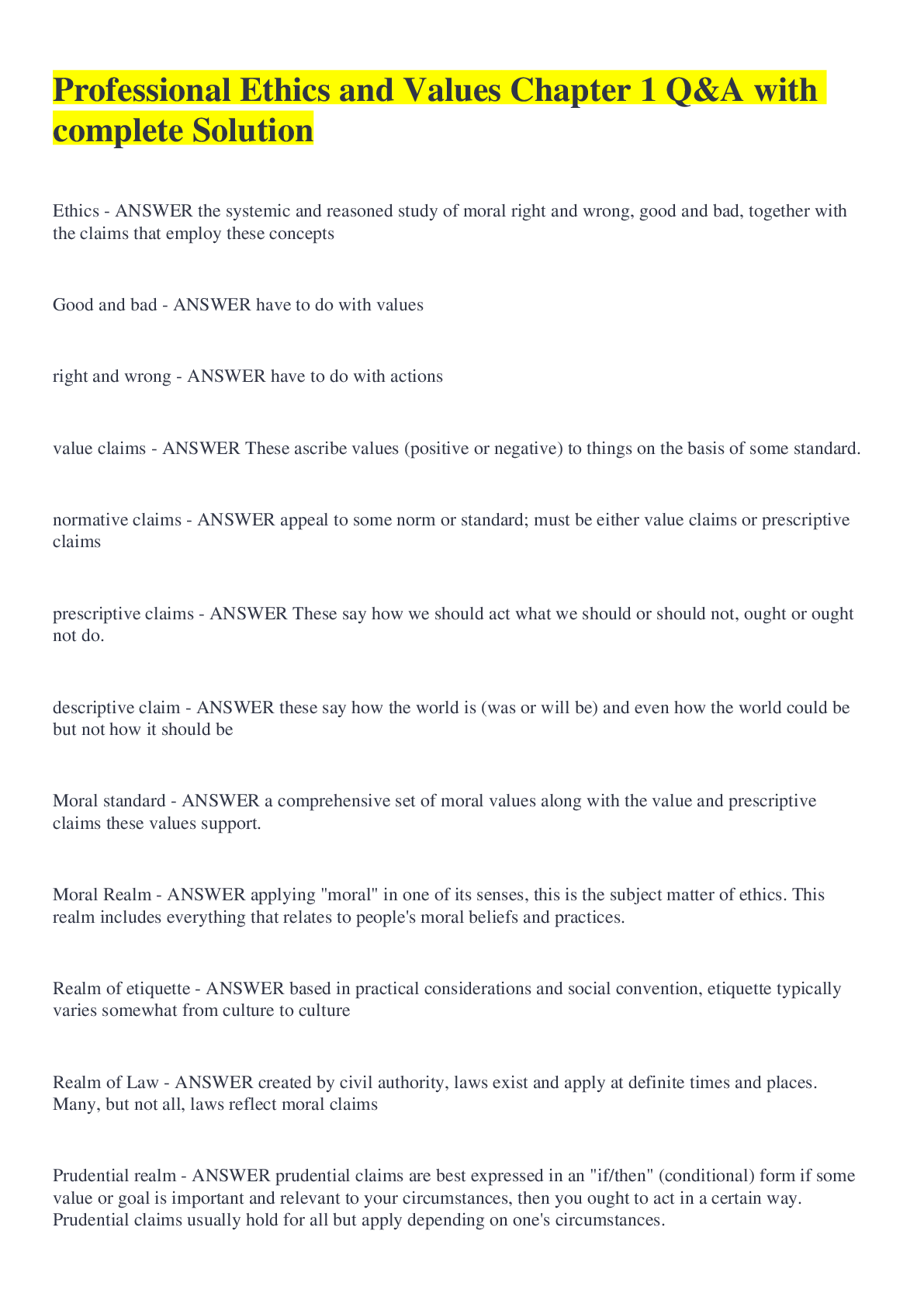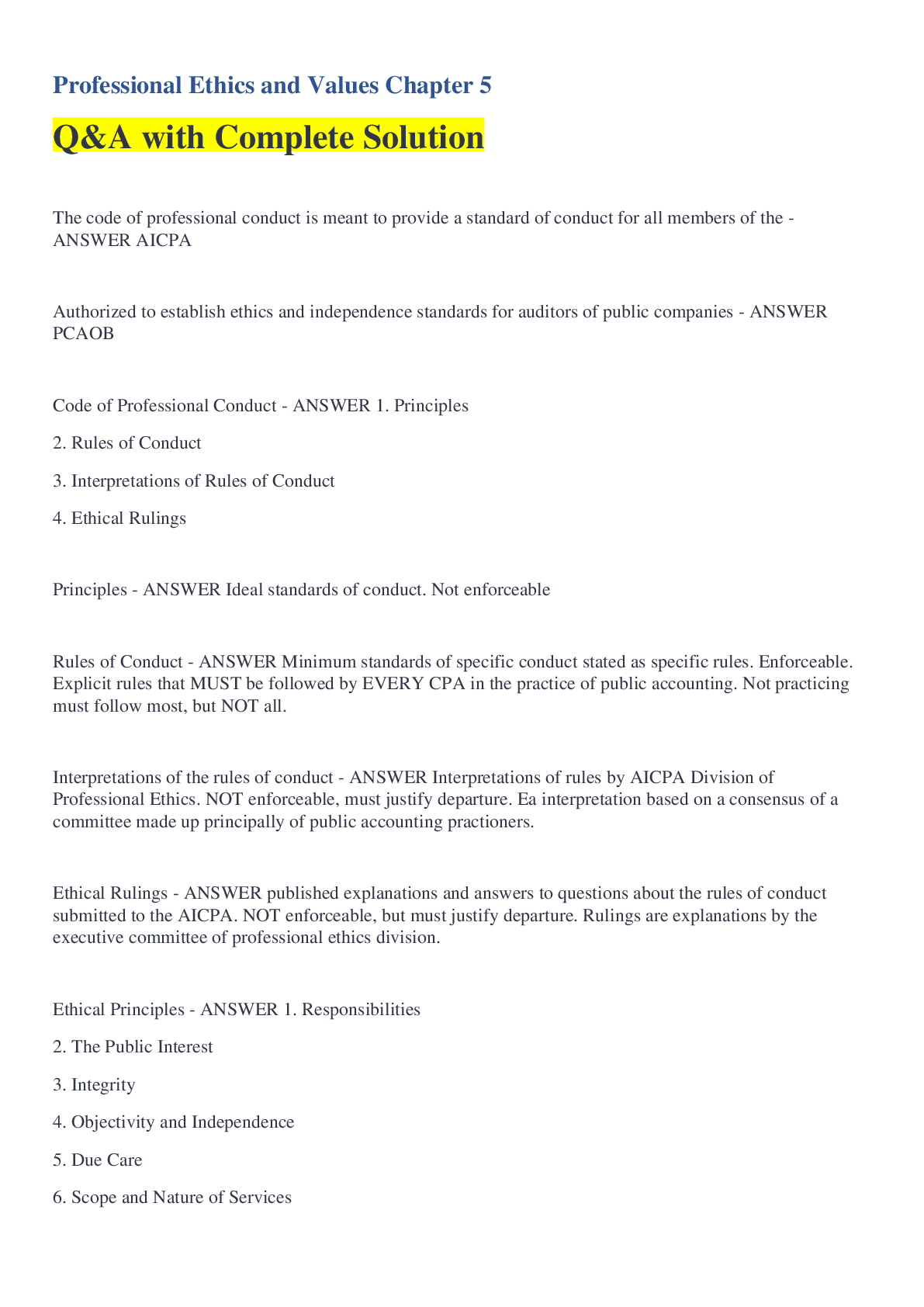Art > QUESTIONS & ANSWERS > Professional Ethics and Values Chapter 4 Q&A with complete Solution (All)
Professional Ethics and Values Chapter 4 Q&A with complete Solution
Document Content and Description Below
LO1 Distinguish ethical from unethical behavior in personal and professional contexts. - ANSWER Ethics can be defined broadly as a set of moral principles or values. Most people define unethica... l behavior as conduct that differs from what they believe is appropriate given the circumstances. Each of us decides for ourselves what we consider unethical behavior, both for ourselves and others. It is important to understand what causes people to act in a manner that we decide is unethical. Six Core Ethical Values - ANSWER trustworthiness, respect, responsibility, fairness, caring, citizenship LO 2 Resolve ethical dilemmas using an ethical framework - ANSWER An ethical dilemma is a situation a person faces in which a decision must be made about the appropriate behavior. Rationalizing Unethical Behavior - ANSWER 1. Everybody does it 2. If it's legal, it's ethical 3. Likelihood of discovery and consequences Resolving Ethical Dilemmas - ANSWER 1. Obtain the relevant facts. 2. Identify the ethical issues from the facts. 3. Determine who is affected by the outcome of the dilemma and how each person or group is affected. 4. Identify the alternatives available to the person who must resolve the dilemma. 5. Identify the likely consequence of each alternative. 6. Decide the appropriate action. LO 3 Explain the importance of ethical conduct for the accounting profession. - ANSWER Our society has attached a special meaning to the term professional. Professionals are expected to conduct themselves at a higher level than most other members of society. Difference Between Cpa Firms and Other professionals - ANSWER CPA firms are usually engaged by management for private companies and the audit committee for public companies, and are paid by the company issuing the financial statements, but the primary beneficiaries of the audit are financial statement users Ways CPAS Are Encouraged to conduct themselves professionally - ANSWER Suppose that you share a ride to a client with another audit staff member. Your colleague proposes that you both submit mileage reimbursement requests for each day of the audit even though you share rides. Explain the six-step approach to resolving an ethical dilemma and apply it to this situation. - ANSWER The following is the six-step approach to resolving an ethical dilemma: 1. Obtain the relevant facts 2. Identify the ethical issues from the facts. 3. Determine who is affected by the outcome of the dilemma and how each person orgroup is affected. 4. Identify the alternatives available to the person who must resolve the dilemma. 5. Identify the likely consequence of each alternative. 6. Decide the appropriate action. Step 1 involves obtaining the relevant facts. In this case, a colleague has proposed thateach staff person submit a mileage reimbursement request, even when they shared a ride. Step 2 involves identifying the ethical issues from the facts. In this case, most would consider itunethical to request mileage when it has not been incurred, although some may argue that eachstaff person could have driven separately and requested mileage. Step 3 involves determiningwho is affected. In this case, the two staff members, the firm, and the client are affected. Steps 4 and 5 involve identifying the alternatives and consequences. If the mileage is requested, the staff person will receive extra compensation and the firm would overpay for travel expenses and theywould then overbill their client for those expenses. However, if the firm learns of this action, itcould issue punishment up to termination from the firm. Step 6 involves deciding the appropriateaction. Most people would say the appropriate action is not to request mileage unless it hasactually been incurred, considering both what is ethical and the possible consequences. Why is there a special need for professional conduct by CPAs? How does this differ from the need for special conduct in other professions - ANSWER CPAs have high standards and conduct to live by in this profession. Their relationship with their clients are totally different from those in other professions. The CPAs conduct makes an impression and should help to give the company an image in the business marketplace. The quality of work that they produce should be a good quality and not reflect any form of unethical behavior. CPAs must be unbiased and competent to perform duties that they are given. LO 4 Describe the purpose and content of the AICPA Code of Professional Conduct. - ANSWER Responsibilities - In carrying out their responsibilities as professionals, members should exercise sensitive professional and moral judgments in all their activities The public Interest -Members should accept the obligation to act in a way that will serve the public interest, honor the public trust, and demonstrate a commitment to professionalism. Integrity -To maintain and broaden public confidence, members should perform all professional responsibilities with the highest sense of integrity. Objectivity and Independence - A member should maintain objectivity and be free of conflicts of interest in discharging professional responsibilities. A member in public practice should be independent in fact and appearance when providing auditing and other attestation services. Due Care - A member should observe the profession's technical and ethical standards, strive continually to improve competence and quality of services, and discharge professional responsibility to the best of the member's ability. Scope and Nature of Services - A member in public practice should observe the principles of the Code of Professional Conduct in determining the scope and nature of services to be provided. Principles of Professional Conduct - ANSWER The section of the AICPA Code dealing with principles of professional conduct includes a general discussion of characteristics required of a CPA. The principles section consists of two main parts: a list of six ethical principles and a discussion of those principles. The principles indicate the profession's responsibilities to the public, clients, and professional colleagues. The principles are designed to guide members in the performance of their professional responsibilities and in meeting the basic requirements of ethical and professional conduct. Conceptual Framework for rules of Conduct - ANSWER 1. Identify threats. When a member encounters a relationship or circumstance that is not specifically addressed by a rule or interpretation, the member should evaluate whether the relationship or circumstance creates a threat to following the rule. 2. Evaluate the significance of the threat. In evaluating the significance of a threat, the member should determine whether the threat is at an acceptable level. A threat is at an acceptable level when a reasonable and informed third party who is aware of the relevant information would be expected to conclude that the threat would not compromise the member's compliance with the rules. 3. Identify and apply safeguards. If the member concludes that the threat is not at an acceptable level, the member should apply safeguards to eliminate the threat or reduce it to an acceptable level. Threats to Compliance - ANSWER Threats to compliance with the rules fall into seven broad categories: adverse interest, advocacy, familiarity, management participation, self- interest, self-review, and undue influence. Safeguards - ANSWER Safeguards fall into three broad categories: 1. Safeguards created by the profession, legislation, or regulation. 2. Safeguards implemented by the client. 3. Safeguards implemented by the firm, including policies and procedures to implement professional and regulatory requirements. Rules of conduct - ANSWER Because the rules of conduct are enforceable, they are stated in more precise language than the section on principles. Because of their enforceability, many practitioners refer to the rules as the AICPA Code of Professional Conduct. When practitioners conduct themselves at the minimum level in Figure 4-3, this does not imply unsatisfactory conduct. The profession has presumably set the standards sufficiently high to make the minimum conduct satisfactory. What is the purpose of the Principles of Professional Conduct? Identify the six principles. - ANSWER The principles are designed to guide members in the performance of their professional responsibilities and in meeting the basic requirements of ethical and professional conduct. My own words: It helps members to perform ethically and professionally in their profession and improve their performance in a responsible manner. Responsibilities Public Interest Integrity Objectivity and Independence Due Care Scope and Nature Explain the conceptual framework for the Rules of Conduct and how it should be applied. - ANSWER The conceptual framework for the Rules of Conduct is designed to assist members in situations where the interpretations of the rules do not address a threat to compliance with the rules. Using the conceptual framework, the member identifies threats, evaluates the significance of the threat, and identifies and applies safeguards to eliminate the threat or reduce it to an acceptable level. The rules for members in public practice apply to attestation services and, unless stated otherwise, apply to all services provided by CPA firms such as taxes and management services. The most notable exception is the Independence Rule, which requires independence only when the AICPA has established independence requirements through its rule-setting bodies, such as the Auditing Standards Board. The AICPA requires independence only for attestation engagements. [Show More]
Last updated: 2 years ago
Preview 1 out of 11 pages
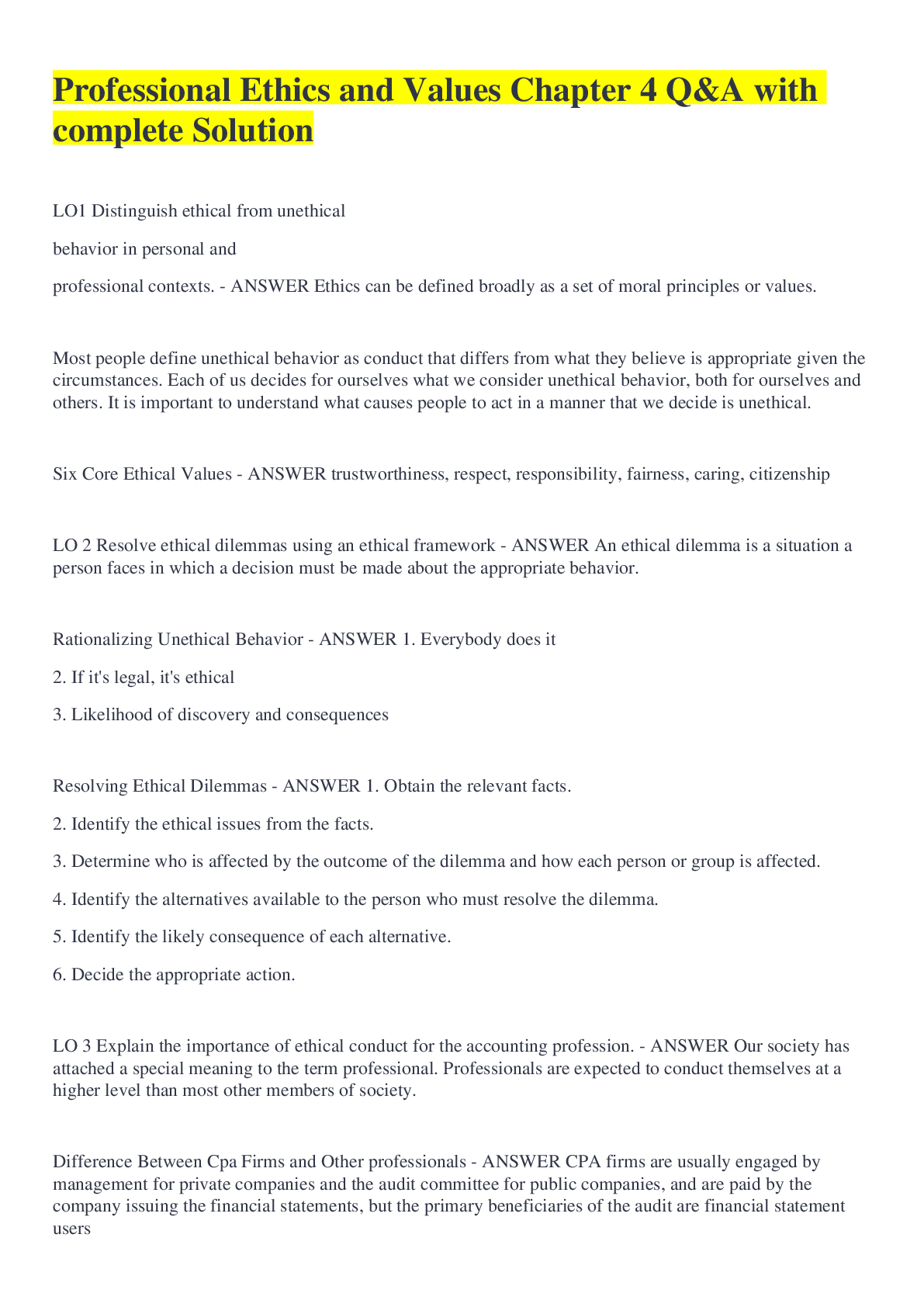
Buy this document to get the full access instantly
Instant Download Access after purchase
Buy NowInstant download
We Accept:

Reviews( 0 )
$9.00
Can't find what you want? Try our AI powered Search
Document information
Connected school, study & course
About the document
Uploaded On
Sep 15, 2022
Number of pages
11
Written in
Additional information
This document has been written for:
Uploaded
Sep 15, 2022
Downloads
0
Views
81


